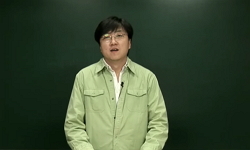The purpose of this paper is to review the basic structure of administrative litigation system of Korea and its role in the judicial review over the exercise of public powers. The courts’ jurisdiction over administrative litigation has an evident co...
http://chineseinput.net/에서 pinyin(병음)방식으로 중국어를 변환할 수 있습니다.
변환된 중국어를 복사하여 사용하시면 됩니다.
- 中文 을 입력하시려면 zhongwen을 입력하시고 space를누르시면됩니다.
- 北京 을 입력하시려면 beijing을 입력하시고 space를 누르시면 됩니다.

The Structures and Roles in Judicial Review of Administrative Litigation in Korea = The Structures and Roles in Judicial Review of Administrative Litigation in Korea
한글로보기https://www.riss.kr/link?id=A100824279
- 저자
- 발행기관
- 학술지명
- 권호사항
-
발행연도
2007
-
작성언어
-
- 주제어
-
KDC
300
-
등재정보
KCI등재후보
-
자료형태
학술저널
-
수록면
44-68(25쪽)
- 제공처
-
0
상세조회 -
0
다운로드
부가정보
다국어 초록 (Multilingual Abstract)
The purpose of this paper is to review the basic structure of administrative litigation system of Korea and its role in the judicial review over the exercise of public powers. The courts’ jurisdiction over administrative litigation has an evident constitutional ground, but the concrete forms of action have been decided by the legislature. The main forms of judicial review are appeal litigations which include a suit for invalidation, a suit for affirming the nullity and a suit for affirming the illegality of omission of a “disposition” in the Administrative Litigation Act. Until recently, the scope of review under the appeal litigation has been restricted mainly by the courts’ narrow interpretation of the concept of “disposition” and their view on the purpose of litigation. A disposition means an administrative legal decision with direct binding force on a specific case. The administrative activities with only factual effect (administrative guidance, administrative investigation, etc.) and administrative rule-making have been excluded from the concept of “disposition.” The purposes of appeal litigation are both to protect the legal right or interest of individual inflicted by an administrative decision (subjective purpose) and to secure lawful exercise of administrative power (objective purpose). However the subjective purpose has been stressed as a primary purpose of appeal litigation and the standing for public interest lawsuit has been denied. But there are observable changes of the courts’ attitude responding to the recent social changes: democratization, decentralization and globalization. The 2004 Supreme Court’s proposal to amend the Administrative Litigation Act, which adopts new forms of actions providing remedies of injunctions and more expansive concepts about the subject matter and standing for appeal litigation, can be seen as an evidence of the courts’ changing self-image.
동일학술지(권/호) 다른 논문
-
Korean Constitutional Court and Due Process Clause
- 서울대학교 아시아태평양법연구소
- ( Ji Bong Lim )
- 2007
- KCI등재후보
-
- 서울대학교 아시아태평양법연구소
- ( Woo Young Rhee )
- 2007
- KCI등재후보
-
Korean Administrative Case Decisions in Law and Development Context
- 서울대학교 아시아태평양법연구소
- ( Daein Kim )
- 2007
- KCI등재후보
-
The Concept of Public Interest Demonstrated in Korean Court Precedents
- 서울대학교 아시아태평양법연구소
- ( Seong Wook Heo )
- 2007
- KCI등재후보




 KISS
KISS






